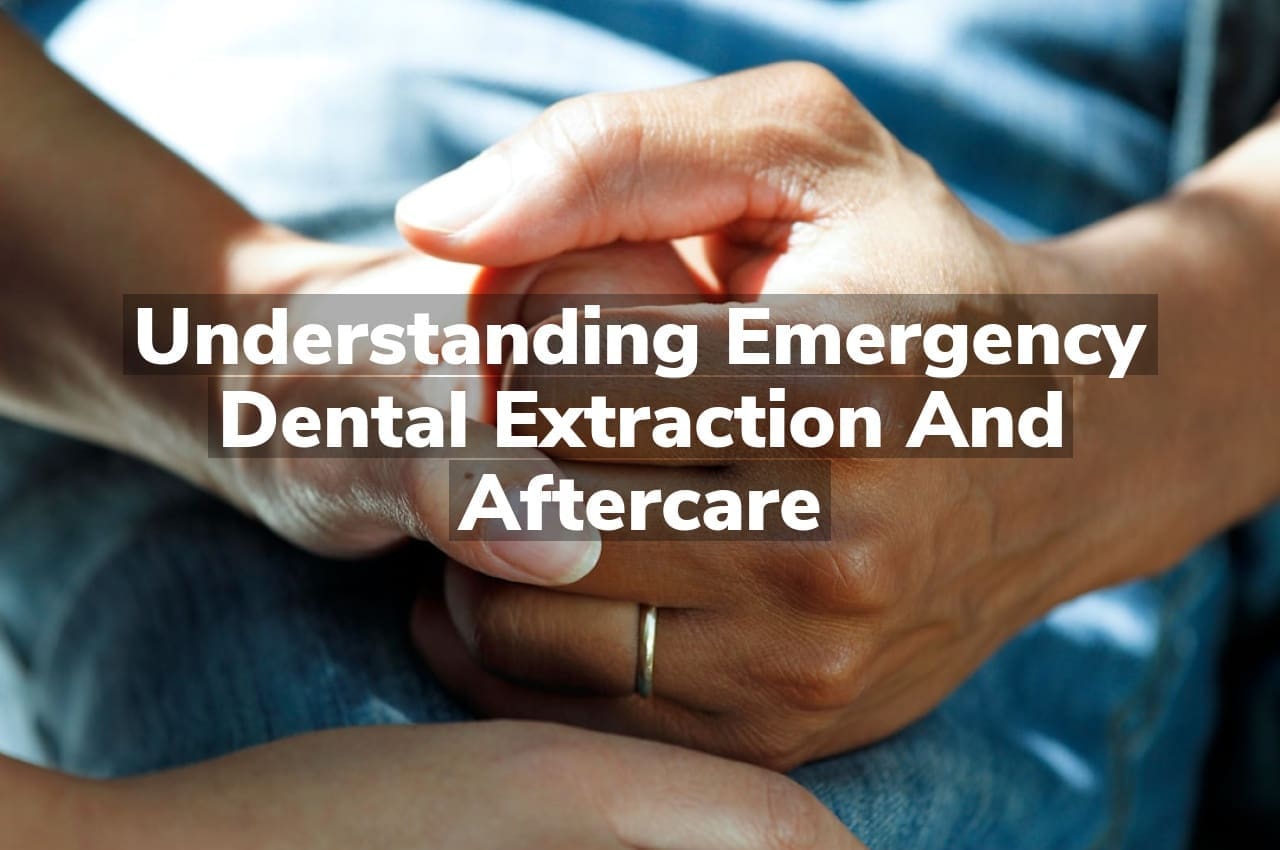Have you ever wondered what exactly is involved in an emergency dental extraction and the general steps for aftercare? An emergency dental extraction is typically performed to address severe pain, infection, or damage when other treatment options might not be feasible. After the procedure, general recovery involves allowing the area to heal naturally over time while monitoring for any signs of complications.
Reasons for Emergency Dental Extractions
Emergency dental extractions are often necessary when a tooth is beyond repair and poses a risk to the overall health of your mouth. Such situations may arise due to severe decay, infection, or trauma that damages a tooth extensively. When the structural integrity of a tooth is compromised, it can affect your ability to eat and speak properly, and maintaining it might lead to further oral health complications. In these cases, an emergency dental extraction becomes a crucial step to prevent the spread of infection and alleviate severe pain.
Another common reason for Handling a Tooth Emergency: Immediate Actions to Take is the risk of overcrowding. This occurs when there isn’t enough space in the mouth to accommodate all the teeth properly. Overcrowding can lead to difficulties in maintaining proper dental hygiene, as overlapping teeth may be hard to clean effectively. In such scenarios, removing one or more teeth can provide the necessary space for the remaining teeth to align correctly, thus preserving the overall health and functionality of your dental structure.
Common Signs Needing Immediate Extraction
Recognizing the common signs that may necessitate an emergency dental extraction is crucial for maintaining oral health. Severe pain that does not subside with over-the-counter pain relievers often indicates an underlying issue that might require immediate attention. Other signs include swelling, which can signify an infection, and bleeding gums, especially if the bleeding is persistent and not related to recent dental work. Additionally, if a tooth becomes loose or is severely damaged due to trauma, this could also be a sign that an extraction might be necessary to prevent further complications.
In cases where these symptoms are present, it’s important to seek professional evaluation promptly. Ignoring such signs can lead to more serious health issues, including infections that could spread beyond the mouth. For those in the New Haven area experiencing these symptoms, visiting a facility that specializes in Emergency Tooth Care, New Haven can provide the necessary assessment and care.
Types of Dental Extraction Procedures
Understanding the different types of dental extraction procedures is crucial when facing an emergency dental extraction. Generally, extractions are categorized into two main types: simple extractions and surgical extractions. Simple extractions are performed on teeth that are visible and easily accessible in the mouth, typically requiring only dental forceps to remove. Surgical extractions, on the other hand, involve teeth that cannot be easily accessed or removed, often because they have not fully erupted or are broken beneath the gum line. This procedure requires a more complex approach, often involving the removal of gum tissue or bone to extract the tooth effectively. Both procedures are common practices in managing dental emergencies that require immediate attention.
General Recovery Timeframes After Extraction
The general recovery time after an emergency dental extraction can vary, typically ranging from a few days to a couple of weeks. Factors such as the complexity of the extraction and the individual’s overall health play a significant role in the healing process. It’s important for patients to closely monitor their recovery and consult their healthcare provider if they have any concerns during this period.
For those in the New Haven area seeking professional care, New Haven Dentist at Westville Family Dental is available to assist with your dental needs.
Potential Complications from Dental Extractions
Understanding the potential complications from dental extractions is crucial, especially in cases requiring an emergency dental extraction. While this procedure is common and generally safe, it carries inherent risks like any surgical intervention. Complications can include infections, prolonged bleeding, dry socket, or damage to adjacent teeth and nerves. Each patient’s risk varies based on factors such as the complexity of the extraction and overall dental health. Awareness of these potential issues is important for anyone undergoing an emergency dental extraction.
Importance of Post-Extraction Oral Hygiene
Maintaining diligent oral hygiene after an emergency dental extraction is crucial for preventing infections and promoting faster healing. After such a procedure, the risk of complications can increase if the extraction site is not properly cared for. It is essential to follow your dentist’s aftercare instructions, which typically include gentle rinsing with salt water, avoiding vigorous brushing near the extraction site, and steering clear of foods that could irritate the area. Keeping the mouth clean not only supports a healthier recovery but also minimizes discomfort and ensures that the healing process progresses smoothly. Remember, effective post-extraction care is key to the success of your emergency dental extraction recovery.
Foods to Avoid Post-Extraction
After an emergency dental extraction, it’s crucial to be mindful of your diet to ensure proper healing and avoid complications. Certain foods can disrupt the recovery process, leading to discomfort or infection. To safeguard your oral health, steer clear of hard, crunchy, or sticky foods such as nuts, chips, and caramel, which can aggravate the extraction site. Spicy and acidic foods should also be avoided as they can irritate the wound. Additionally, extremely hot or cold foods can cause pain and may disrupt the blood clot that is essential for healing. Opting for soft, gentle foods not only promotes healing but also helps prevent any damage to the extraction site during this critical recovery period.
Normal Symptoms Following Dental Extractions
After undergoing an emergency dental extraction, it’s common to experience a range of symptoms as part of the healing process. Normal post-procedure symptoms include swelling, mild bleeding, and some pain, which typically subside within a few days. It’s important to follow your dentist’s aftercare instructions to mitigate these symptoms and promote a smooth recovery. If you notice excessive bleeding, severe pain, or signs of infection, contact your dental professional promptly. Understanding these symptoms will help you effectively manage your recovery from an emergency dental extraction.
When to Contact a Dentist Post-Extraction
After undergoing an emergency dental extraction, it’s crucial to know when to reach out to your dentist for follow-up care. Contact your dentist immediately if you experience persistent or severe pain, swelling that worsens over time, signs of infection such as fever, pus, or foul taste, uncontrolled bleeding, or if the extraction site does not seem to be healing properly. These symptoms might indicate complications that require professional attention. Timely communication with your dentist can ensure proper healing and prevent further issues, making it an essential step in your post-extraction care regimen.
Conclusion
For further inquiries on emergency dental extraction, please call us at 203-691-5389 or read our reviews on Google Maps.

